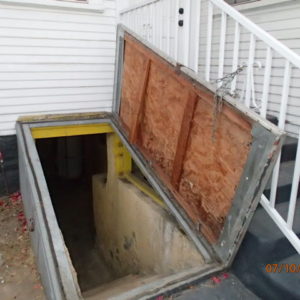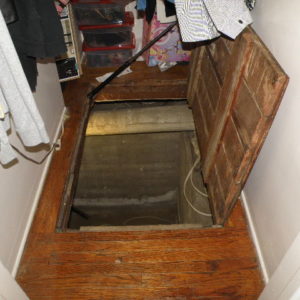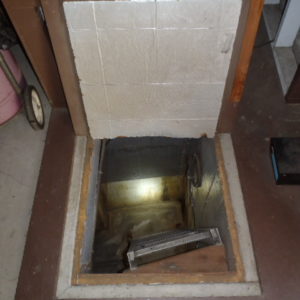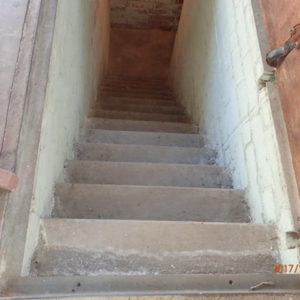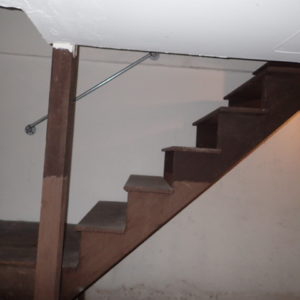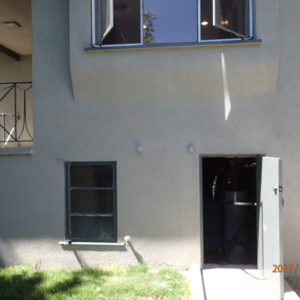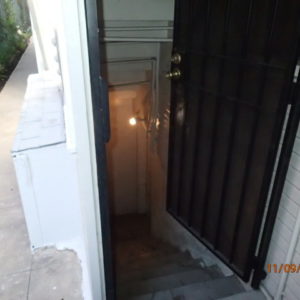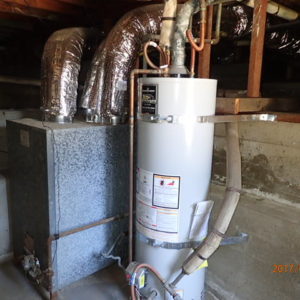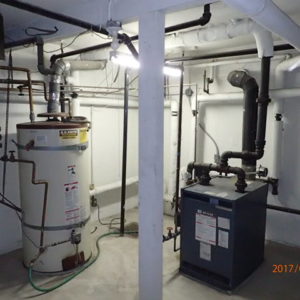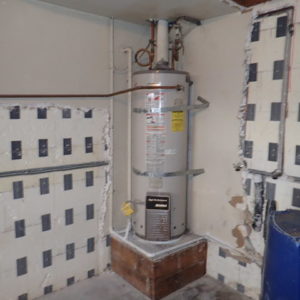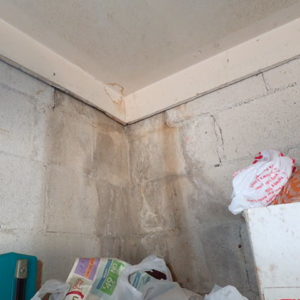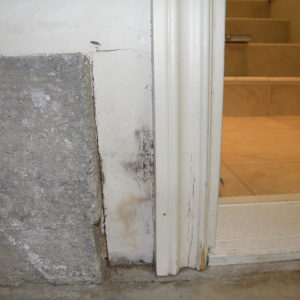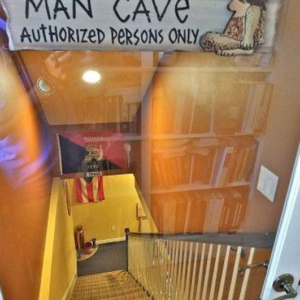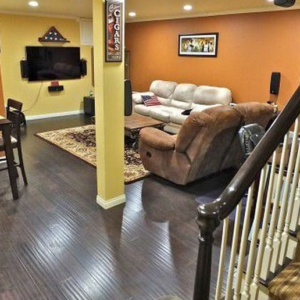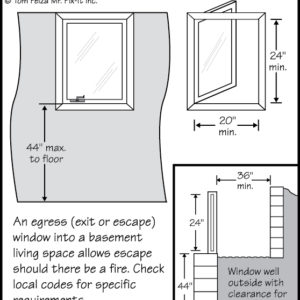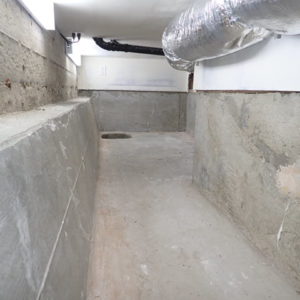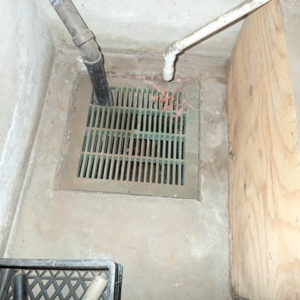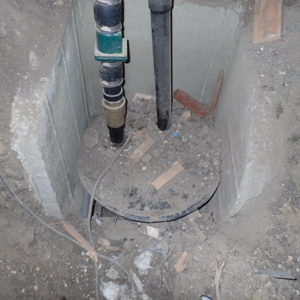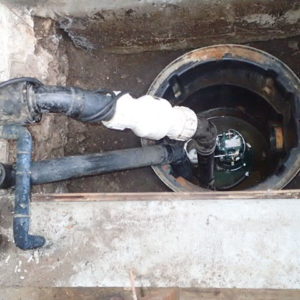Depending upon the design of the structure, some houses have basements. Some can be a “Full basement” and some will be a small, “California basement”. The latter was a term that came about as builders coming across America made the basement smaller and used it only for the gravity heater and water heater and was only a tiny footprint of an area under the house.
Getting to the basement really shouldn’t be dangerous because it is wonderful to have extra storage. That is not to say that all basements are equal in size or accessibility, but you should be able to get there with rappelling down into a mine shaft.
“Watch your head!” Other calls to a friend as they start to enter a basement can be common. Another familiar warning is usually to be careful on the ladder. Most often the ladders are home made rickety things that should be thrown into the fireplace.
Basement Access
![]()
This shows an exterior basement entrance. This has been described as an exterior "bulkhead" entrance and often an industry slang using a company name who builds them will be known as a "Bilco style" door made by Bilco.
![]()
Where do you hide a heater and water heater? Down in the basement through the coat closet floor.
![]()
Some mini basements had rickety ladders that are basically a hazard. If you do not need to store your vegetables down in the "root cellar", you may not be going there even once a year.
![]()
Current rules require a stair rail to be able to grab if you trip. Many basements access areas are narrow and that could be a life saver or you may feel it takes too much space protruding off the wall. You still will not get the boat you built down there out of this little hole.
![]()
Basement stairs in older homes almost never had safety concepts like hand rails.
![]()
This structure built on a hillside has a walk-in basement at one ground level entrance.
![]()
This exterior entry almost look safe without any monsters down there (as the grandchildren would say.)
When you enter a basement, is it cold, dark and damp? Or is it a finished room with ping pong table and made into a “Man Cave”? However you spend your money, this can be considered a storage location or an investment and a place to relax in a hideaway.
Basement Structure – Walls
![]()
Basements can be small and just a recess in part of the crawlspace.
![]()
This larger basement is another example of a basement for the machinery but not designed as an extra play room.
![]()
Some basements are raw concrete and some are fully finished. This one was concrete walls where they covered them with insulation but did not complete this with drywall, etc.
![]()
If the wall were finished, this flowerbed leak outside in the front would have caused a lot of damage and probably made a moldy wall. Before finishing a basement, be certain you have addressed any exterior drainage issues.
![]()
This shows where moisture was seeping down the exterior wall by the stairwell. The moisture settled on the finished wall that had drywall installed and developed mold.
![]()
Some people want to use the basement for whatever reason. Maybe to relax away from others.
![]()
This basement seems to be a little cleaner than some of the other examples. Your choice of how you want to spend money.
![]()
If the basement footprint extends to a perimeter wall, rules for egress (escape -getting out) may be required by your City.
![]()
This guy was so proud that he made a "basement". It was very shallow and not for standing up straight but I was thinking, "Thank you for cementing the tiny hole under the house." But it was clean!
Once you get into the basement, it only makes sense to consider ways to address moisture issues as this may be the lowest part of the house. If you have the water heater down in the basement, that is something that could leak some day. Never have I planned a flat tire on a car or a leak in my house. But they happen. Figuring out where is the lowest spot in the floor and installing a sump well and a pump can avoid some expensive repairs in the future. It is like a small insurance policy that you maintain on your own. You don’t really want to use your auto insurance or home owner’s insurance, but when the accident happens, it is good to have it.
Basement Moisture
![]()
A well to hold the sump pump is best located in the lowest spot of the basement.
![]()
Most places don't have many floods, which is good. Consider At least checking/testing the pump to see if it still works.
![]()
This well and pump were operational. this collects washing machine water as the laundry was also down in the basement. They will know right away if the pump fails when doing a load of laundry.
![]()
The discharge line needs a "one-way" valve to prevent all the water moved by the pump from coming back down to the basement and flooding the floor.









